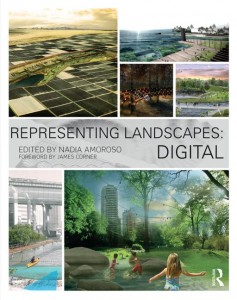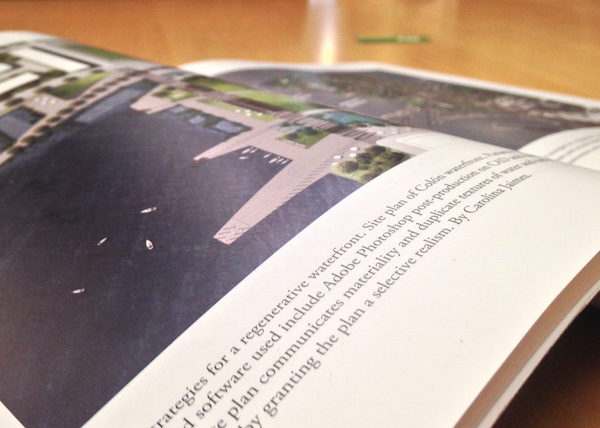A new book on digital representation in landscape architecture features work by FIU Landscape Architecture + Environmental and Urban Design in two chapters and a special afterword by Chair Roberto Rovira.
 The book Representing Landscapes: Digital, edited by Nadia Amoroso, profiles a wide selection of effective and visually stunning drawings and models done by students across the globe from various respected landscape architecture programs. The images are supplemented with critical and narrative essays on the topics of visual representation in the profession – contributed by studio professors – creating a valuable resource for students on the various techniques and styles used in communicating concepts. The book is designed as a resource for lecturers to use in their teaching, to aid students in developing their landscape representation. (Source: Routledge)
The book Representing Landscapes: Digital, edited by Nadia Amoroso, profiles a wide selection of effective and visually stunning drawings and models done by students across the globe from various respected landscape architecture programs. The images are supplemented with critical and narrative essays on the topics of visual representation in the profession – contributed by studio professors – creating a valuable resource for students on the various techniques and styles used in communicating concepts. The book is designed as a resource for lecturers to use in their teaching, to aid students in developing their landscape representation. (Source: Routledge)
Representing Landscapes: Digital features a chapter written by FIU LAEUD Chair Roberto Rovira called “The Site Plan is Dead: Long live the site plan,” in which Rovira explains how digital representation enhances the site plan and generates more complexity and intricacy. To visually accompany his chapter, Rovira includes FIU students’ site plans created through CAD, Adobe Illustrator, Adobe Photoshop, and Adobe InDesign. The FIU LAEUD students whose plans are included in this chapter are Carolina Jaimes, Martina Gonzalez, Maria Ines Aragon, Jose Alvarez, and Devin Cejas.
The book contains another chapter written by Rovira entitled “The Case for an Alternative Creek, Arroyo, Puerto Rico.” This chapter explains how digital representation was used in FIU LAEUD’s studio South Coast, Puerto Rico. In this studio, students chose the southern coast of Puerto Rico as its study area. Rovira’s chapter focuses on one student, Martina Gonzalez, who studied Arroyo, Puerto Rico, a community on the eastern edge of the island’s South Coast. She proposed for a community-scale hydrological framework titled Alternative Creek, and the plans and renderings for this proposal accompany Rovira’s chapter.
Finally, Representing Landscapes: Digital ends with an afterword by Rovira, in which he tells the reader that moderation is key in regards to going digital, and that a designer must still regard with importance the holistic understanding of landscape architecture.
To order Representing Landscape: Digital, click here.
Follow FIU Landscape Architecture + Environmental and Urban Design on Facebook, Twitter, and Instagram.



